Here in the Pacific Northwest, autumn has arrived. It was a long, dry summer and only in the last few days has the temperature dropped and the rain (at last) begun to fall. In today's post, I share four well-loved paintings of autumn along with reflections of how these paintings can help us welcome the current season. If you live in the southern hemisphere and are entering springtime, perhaps you can use the paintings as a contrast to the seasonal changes you yourself are experiencing.
I believe paying attention to the world around us an important spiritual discipline. It honors the work of the Creator shown to us through creation and also expands our attention beyond our own relatively small personal world and own particular concerns. And, looking through another person's eyes and interpretation broadens our perspective and helps us see what we wouldn't otherwise see. I share the four paintings in this post as invitations to engage with the rest of creation, be released from the tight leash of work and tasks to take in what is around you, come in close to enjoy and comprehend the current season, and explore the building of relationships to particular places through time and place.
Birch Forest I, Gustav Klimt
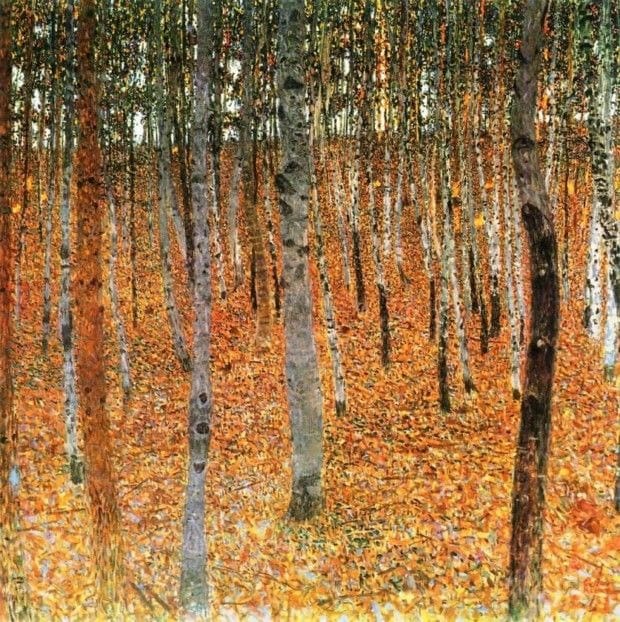
Within Birch Forest by Gustav Klimt, I experience a visual invitation to enter the golden season of autumn. The horizon showing through the trees in the distance gives a sense of journey, and a carpet of glowing leaves on the ground creates an abundance of potential pathways leading more deeply into the open forest.

The field of vision through the forest and the light created by the bright autumn leaves, seem to work together to present the forest as a place that welcomes the presence of the viewer within it.
Birch Forest gives a focused view of the forest by showing us a particular view of a forest midsection—not the sky or the treetops, but the ground and the tree trunks. Our attention is drawn to the carpet of leaves that has left the trees bare and covers the ground with the golden glow of autumn. In no other season, would you enter this particular place in this particular way.

I have found one of the most important and difficult steps in connecting to creation is overcoming inertia, fear, or busyness. It takes effort to step out of car, home, or other manmade space to enter a place where we have less control. When we step into that space, the living creation going about its business all around us can surprise us and instruct us in important ways.
Mulberry Tree, Vincent van Gogh
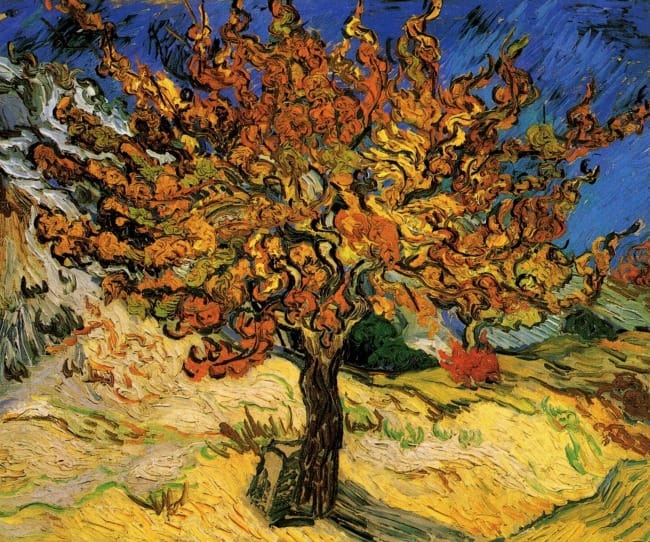
While Birch Forest emphasizes a stand of trees, Mulberry Tree by Vincent van Gogh centers on a single tree. We don't always need grand, sweeping vistas to awe us; often one tree is more than enough. The tree exhibits a wildness that seems to give permission to free one's mind from the tight leash of objective representation and look for the movement of joy around you. Although the painting was done at a difficult time in van Gogh's life (while he was in a mental asylum and not long before he died), it isn't a depressing painting and reports are that he was happy while painting it.
There is a deep playfulness in the work. The branches that curl toward the blue sky suggest a sense of life and gaiety, even the feel of a dance movement. There is a freedom of interaction and creativity. Birch Forest was a personal favorite of Van Gogh's, and in it he employed some unusual techniques, including using the handle of his brush to make some of the spiraling leaves.
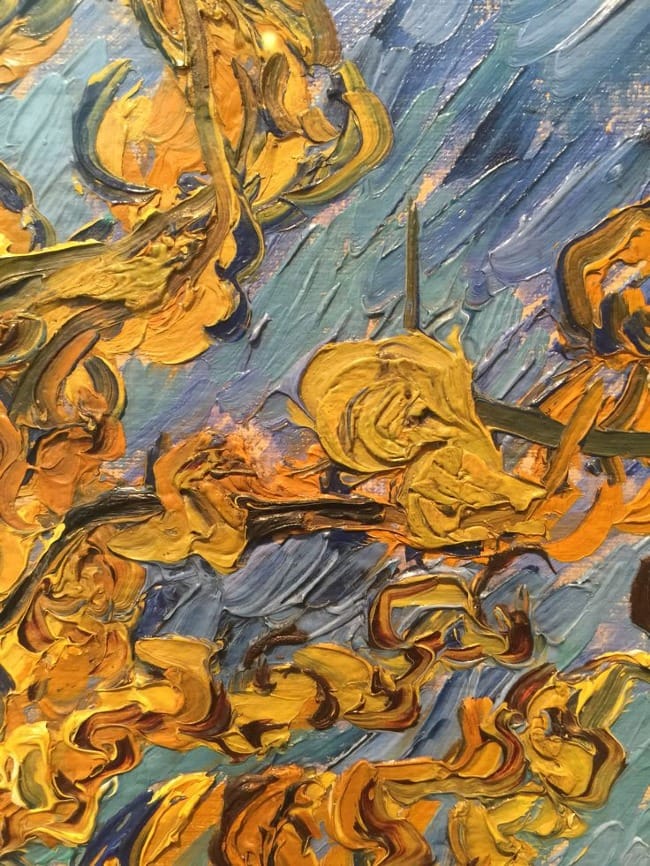
Although the tree is firmly planted in the ground, there is a wildness that suggests to me that this tree isn't confined to rules and regulations.
If you look at this painting while sitting outside, does it help you see your own surroundings in a more playful and creative way? Does spending time with it encourage you to loosen you grip on your own experience, time, and imagination?
Autumn Leaves, Georgia O'Keefe
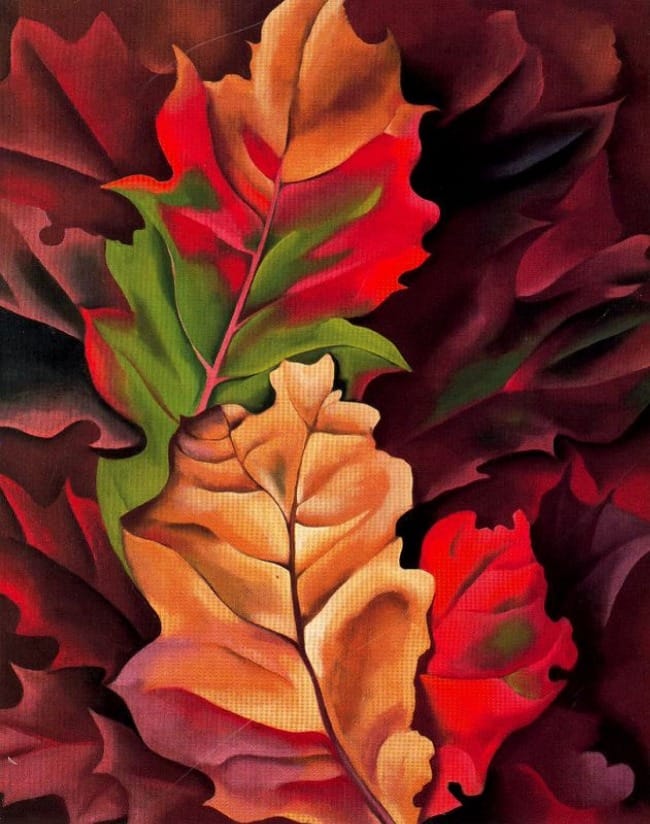
Autumn Leaves by Georgia O'Keefe opens up a different and complementary way of experiencing and observing creation. Instead of a swathe of forest or even a single tree being the subject, the painting comes in close to a few oak leaves piled on top of each other. The curving lines of the leaf edges, the straighter lines of the veins, the transitions from one color to another, the patches of shadow and light, all create a sense of interaction between the leaves within the pile. Though these leaves have fallen from the tree, there is a sense of life in them.
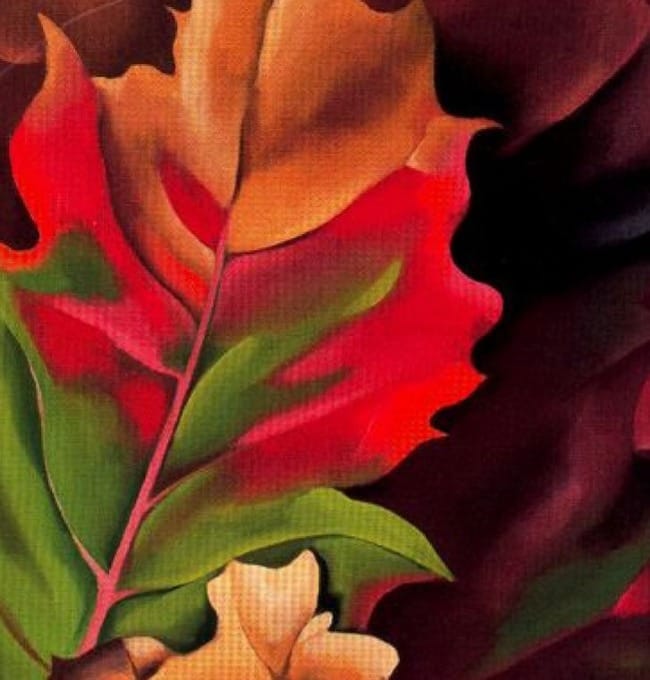
Through the intimacy of the painting, the viewer is beckoned to come in close and use their own senses of touch, smell, taste, sound, and sight to fully experience the sensual feast of the living (and even decaying) world around them.
Poplars, (Autumn)II, Claude Monet
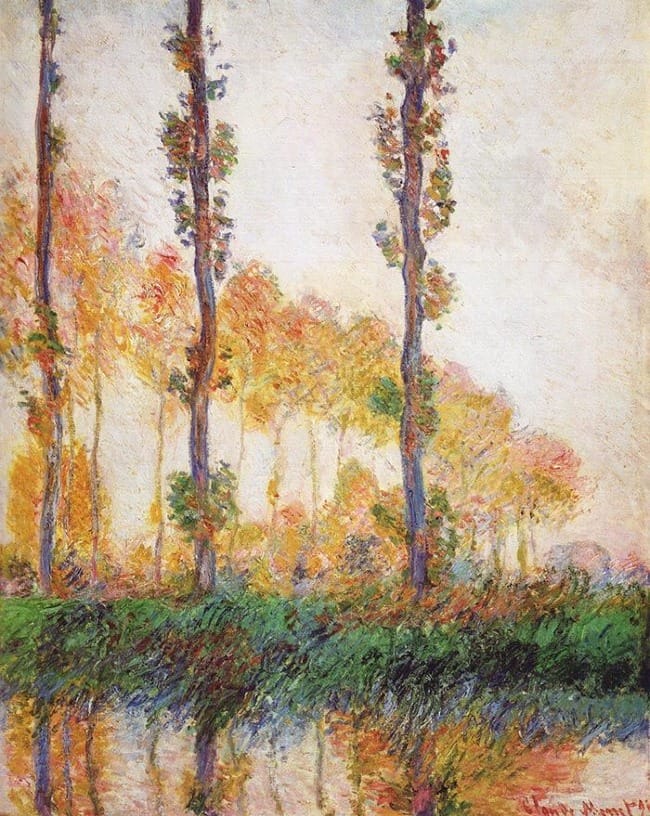
Monet's painting Poplars (Autumn) II is part of a series of 24 poplar paintings which Monet painted from the same riverbank. Apparently, Monet would line up a few canvases at once and move from one to the other, working on them in turn according to the lighting changes. He returned to the same spot again and again, experiencing and capturing on canvas particular places in different seasons, different hours of the day, and different weather conditions. This combination of sameness of place and difference of lighting, conditions, and experience seems to have fascinated him. In the "Poplar" painting above, the green of the grass and the oranges of the changing trees show a season just at the cusp of change. In the three "Poplar" paintings below, Monet shows the same scene, in very different conditions and seasons.
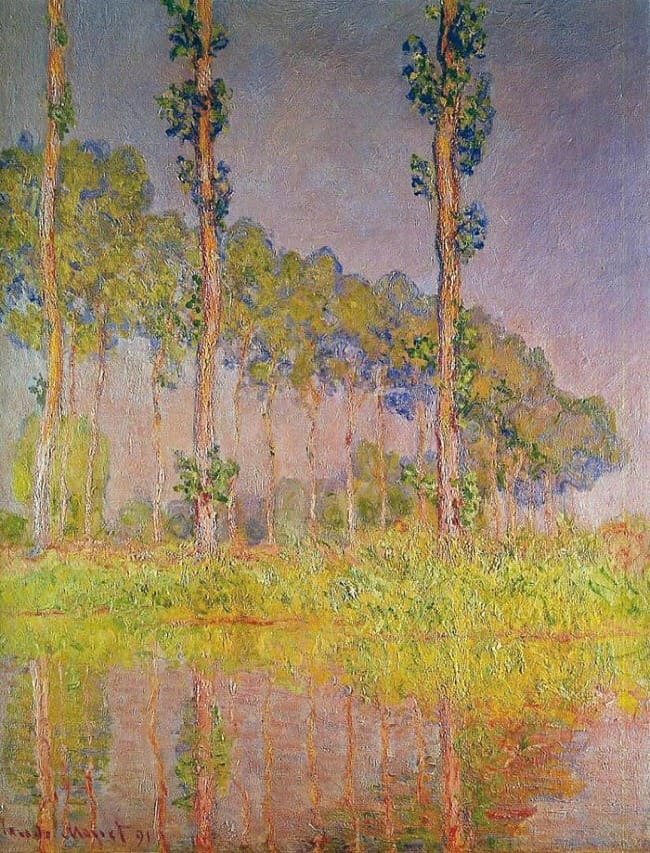
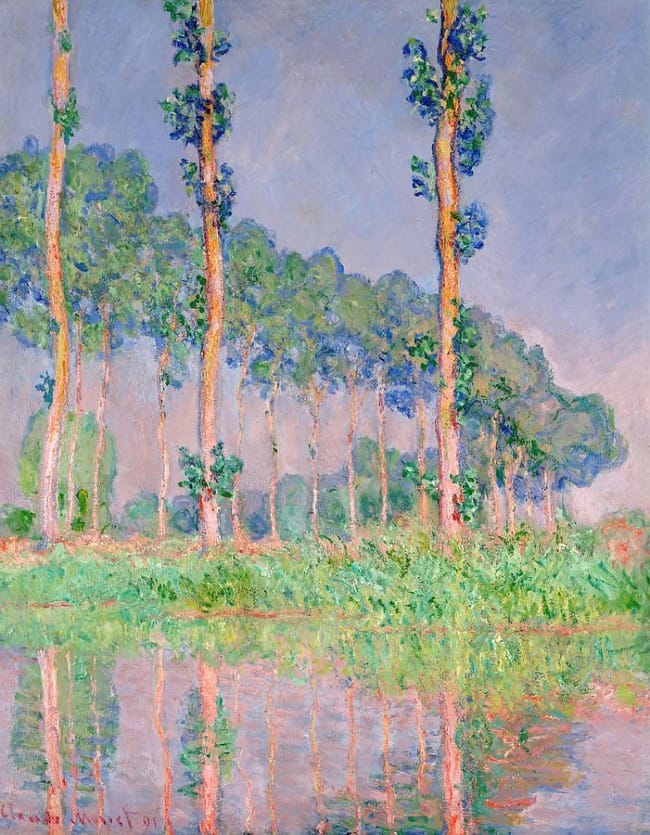
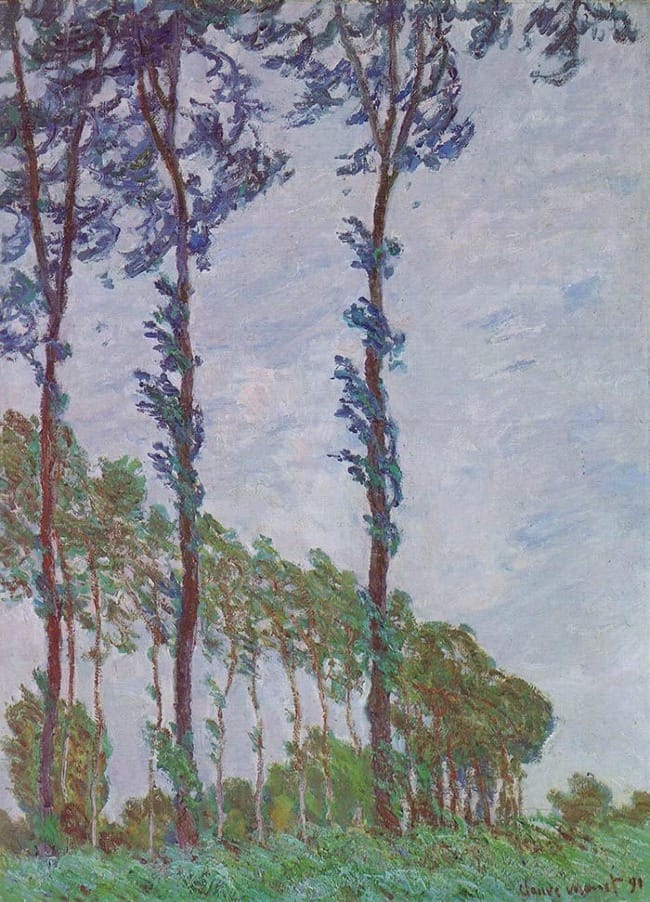
Three Poplars in Spring, Poplars Pink Effect, Poplars Wind Effect, Claude Monet
It strikes me that this habit of returning to a particular place over and over, and experiencing it in different ways, creates a deep relationship with these particular places, changing from being a mere sightseer to someone with real connections to that place. Your mental image of that place deepens and develops into a more varied and well-rounded image as you experience it in different circumstances as is true of getting to know anything better. You see changes, you see different angles, you carry it around with you when you physically aren't there. It may even become a "home" place for you if you spend time getting to know it.


Vermillion Lake in August, Vermillion Lake in October, by Timothy Conner
In late August, my family travelled in Canada and a month later my son returned to many of the same places. He took photos from places where he had taken photos from on the prior trip and placed them side by side for us so we could see the differences. It was fascinating to see how much change there was. By returning even a second time to the same places, he has a much fuller knowledge of those places as living, changing places. Is there a place you like to return to in the changing seasons?
To leave a comment, click in the comment box below, or email me at info@circlewood.online.
Louise
